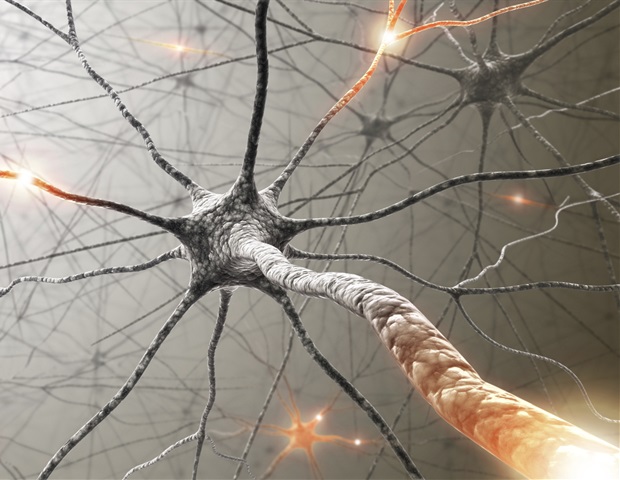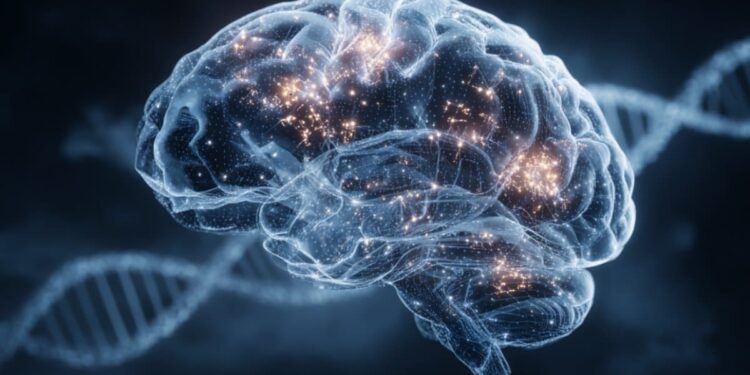Summary: A new computational tool developed by researchers has uncovered genetic evidence that directly links Alzheimer’s disease to the loss of memory-producing neurons, helping solve a decades-long mystery in dementia research. The algorithm, called seismic, compares genetic data with individual cell types, outperforming previous methods and highlighting how specific brain cells, not just immune cells, are implicated in Alzheimer’s.
By fusing large-scale genetic and cellular data, the tool provides a clearer view of how genetic risk translates into cellular vulnerability. The researchers say the technique could reshape the way scientists identify disease-relevant cells in a wide range of neurological and metabolic disorders.
Key facts:
Novel algorithm: Seismic tool integrates genetic and cellular data to map which cell types drive disease. Link revealed: Genetic evidence found linking Alzheimer’s risk to memory-related neurons rather than immune cells. Broad utility: The method can be applied to other complex diseases such as Parkinson’s, aiding in early detection and drug targeting.
Source: Rice University
The number of people living with dementia worldwide was estimated to be 57 million in 2021, with almost 10 million new cases reported each year. In the United States, dementia affects more than 6 million lives and the number of new cases is expected to double in the coming decades, according to a 2025 study.
Despite advances in this field, a complete understanding of the mechanisms that cause disease is still lacking.
To address this gap, researchers at Rice University and collaborators at Boston University have developed a computational tool that can help identify which specific types of cells in the body are genetically linked to complex human traits and diseases, including forms of dementia such as Alzheimer’s and Parkinson’s.
Known as a “Single-Cell Expression Integration System for Mapping Genetically Involved Cell Types,” or seismic, the tool helped the team identify genetic vulnerabilities in memory-producing brain cells that link them to Alzheimer’s, the first to establish an association based on a genetic link between the disease and these specific neurons. The algorithm outperforms existing tools in identifying cell types that are potentially relevant in complex diseases and is applicable in disease contexts beyond dementia.
The research, published in Nature Communications, helps unravel a long-standing contradiction in Alzheimer’s research: While genetic clues in patients’ DNA point to infection-fighting brain cells, namely microglia, as the cell type most strongly implicated in the disease’s pathology, patients’ brains actually tell a story. different.
“As we age, some brain cells naturally slow down, but in dementia – a disease of memory loss – specific brain cells actually die and cannot be replaced,” said Qiliang Lai, a Rice doctoral student and first author of the study.
“The fact that it’s brain cells that create memory and not fight infections raises this confusing puzzle where the DNA evidence and the brain evidence don’t match up.”
The team’s research used computational methods to analyze existing genetic data in a new way. Their method integrates two types of large-scale biological data: genome-wide association studies (GWAS) and single-cell RNA sequencing (scRNA-seq), where GWAS analyzes the human genome to find small differences in DNA that are shared between people with a given disease or trait, while scRNA-seq measures which genes are active in tens of thousands to millions of individual cells, creating a map detail of how cells differ at the molecular level.
Previous attempts to extract correlated insights from this type of data were difficult to scale and interpret and produced less strong associations due to two main weaknesses:
First, in terms of scRNA-seq, cell type resolution can be too broad and overgeneralized, missing critical details such as the brain region where the cells are located; Second, in terms of GWAS, the genetic signal in large studies based on clinical diagnoses tends to overemphasize the cell types that are most consistently affected, i.e. cells related to the immune system, drowning out other aspects of the disease.
“We built our seismic algorithm to analyze genetic information and precisely match it to specific types of brain cells,” Lai said. “This allows us to create a more detailed picture of which cell types are affected by which genetic programs.”
The researchers tested the algorithm and found that it performed better than existing tools, more clearly identifying important cellular signals relevant to the disease.
“We think this work could help reconcile some conflicting patterns in data related to Alzheimer’s research,” said Vicky Yao, assistant professor of computer science and member of the Ken Kennedy Institute at Rice.
“Beyond that, the method will likely be very valuable in helping us better understand which cell types are relevant in different complex diseases.”
The research comes amid a renewed push across the state to promote brain health and dementia prevention through new public investment initiatives. Earlier this year, the Texas Legislature established the Dementia Prevention and Research Institute of Texas (DPRIT) through Senate Bill 5, a bipartisan measure designed to accelerate innovation in dementia prevention, treatment and care.
This November, Proposition 14 will appear on the state ballot to fund DPRIT with $3 billion over the next decade, creating the largest state-funded dementia research program in the country. Modeled after the successful Cancer Prevention and Research Institute of Texas (CPRIT), DPRIT aims to make Texas a global leader in brain health and neurodegenerative disease research.
“We are at a point where advances in informatics and data science are increasingly transforming the way we study human diseases,” said Yao, a CPRIT fellow. “Now we have to keep that momentum going.”
Funding: The research was supported by the National Institutes of Health (RF1AG054564, R21AG085464), CPRIT (RR190065), Cure Alzheimer’s Fund, and the Karen Toffler Charitable Trust. The content of this press release is the sole responsibility of the authors and does not necessarily represent the official views of the funding organizations and institutions.
Key questions answered:
A: Scientists developed a new computational tool, called seismic, that pinpoints which specific types of brain cells are genetically linked to complex diseases like Alzheimer’s.
A: The tool reconciles a long-standing contradiction in Alzheimer’s research by linking genetic evidence to the actual memory-producing neurons that die in the disease, rather than the immune cells previously thought to be the main culprit.
A: Seismic integrates genetic data (GWAS) with single-cell RNA sequencing to reveal how disease-related genetic changes affect individual cell types in different regions of the brain.
A: The approach could transform the way researchers identify cells relevant to diseases such as Alzheimer’s and Parkinson’s, paving the way for targeted prevention and treatment strategies.
About this research news on AI, genetics and Alzheimer’s disease
Author: Silvia Cernea Clark
Source: Rice University
Contact: Silvia Cernea Clark – Rice University
Image: Image is credited to Neuroscience News.
Original research: Open access.
“Unraveling associations between complex traits and cell types with seismic” by Qiliang Lai et al. Nature Communications
Abstract
Disentangling associations between complex traits and cell types with seismic
Integrating single-cell RNA sequencing with genome-wide association studies (GWAS) can uncover cell types implicated in complex traits and diseases. However, current methods often lack scalability, interpretability, and robustness.
We present seismic, a framework that calculates a novel specificity score that captures both magnitude of expression and consistency across cell types, and introduces influential gene analysis, an approach to identify genes driving each cell type-trait association.
Through more than 1,000 characterizations of cell types with different granularities and 28 polygenic traits, seismic corroborates known associations and uncovers cell groups relevant to traits that are not evident through other methodologies.
In Parkinson’s and Alzheimer’s, seismic imaging reveals differences in pathology specific to cells and brain regions.
Seismic analysis of a pathology-based Alzheimer’s GWAS allows identification of vulnerable neuron populations and molecular pathways involved in their neurodegeneration.
Overall, seismic is a computationally efficient, powerful, and interpretable approach for mapping relationships between polygenic traits and cell type-specific expression, offering new insights into disease mechanisms.




















